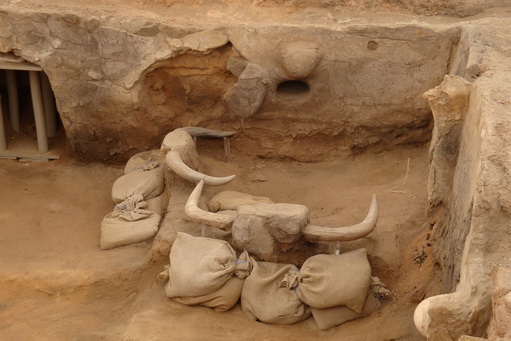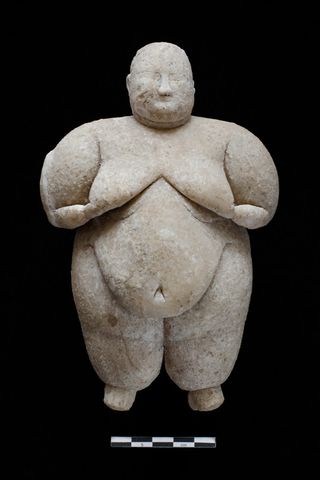4 Chapter 1.4: The Neolithic Revolution
THE NEOLITHIC REVOLUTION
The Neolithic period ushered in a new way of life for humans that greatly affected art and architecture. The Neolithic period did not happen at the same time across the world but appeared in the Near East first.


Neolithic Revolution TASK 1:
The following video outlines the societal changes that occurred during the Neolithic period. After viewing the video, respond to the accompanying question on prompt.
The Neolithic Revolution: The Development of Agriculture – The Journey to Civilization
Neolithic Revolution TASK 1 prompt:
List the three major changes that took place in the Neolithic period.
1.
2.
3.
NEOLITHIC SETTLEMENT IN THE MIDDLE EAST: ÇATALHÖYÜK
The Near East transitioned into the Neolithic period earlier than did western Europe and is home to several significant settlements. Art played an increasingly important role in the Neolithic as greater care was taken to build more permanent housing and to decorate and furnish it.

Çatalhöyük TASK 1
Below is a video and short article about a famous Neolithic settlement in Turkey – Çatalhöyük. After reviewing these materials, answer the accompanying material.
Çatalhöyük TASK 1 prompt: Create a fact sheet on Çatalhöyük using the following prompts.
Location (present):
Date of occupation (when largest):
Number of inhabitants (when largest):
Layout of settlement:
Features of houses:
Types and meaning of decoration:
Çatalhöyük and the Dawn of Civilization
Çatalhöyük – Khan Academy: Featured Artworks TASK 1:
Click this link for a learning module on Çatalhöyük from Khan Academy. After reading the Khan Academy article, describe for each of the following featured artworks describe how it is typical of artworks found at this site and how it might have been used or what it meant.
Çatalhöyük Featured Artworks TASK 1 prompts:
Featured works:
Seated Woman of Çatalhöyük, The Museum of Anatolian Civilizations

Neolithic Wall Painting in Building 80, Çatalhöyük

Bull bucrania, corner installation in Building 77, Çatalhöyük

NEOLITHIC MONUMENT IN EUROPE: STONEHENGE
The peoples of Neolithic Britain produced quite different types of monuments than what exists in the Middle East. While their homes were largely made from impermanent materials, they built enormous megalithic structures that marked tombs and ceremonial sites.

Virtual tour of Stonehenge
Click this link for a 360 photo experience from English Heritage that allows you to explore various aspects of the site.
Stonehenge TASK 1
Far from being an isolated monument Stonehenge was part of a complex where a multitude of people worked and came to gather. Scholars also know a great deal about where the stones originated, raising questions about its builders. After watching the following videos complete the accompanying fact sheet.
Construction of Stonehenge
The Secrets of our Sites | Stonehenge | with Mary-Ann Ochota – English Heritage
Stonehenge | World Heritage Site | Why was Stonehenge built? | 10-Minute Talks | The British Academy
Stonehenge TASK 1 prompt:
Describe the form and nature of Stonehenge, Durrington Walls, and Woodhenge in general terms (specific phases of Stonehenge not required).
How were they connected?
Which monuments in the complex have a relationship to the rising and setting of the sun?
Where did the bluestones originate and why might they have been moved?
Further reference images for Neolithic art
Urfa Man

Ain Ghazal Statues

Possible goddess statue, Çatalhöyük


